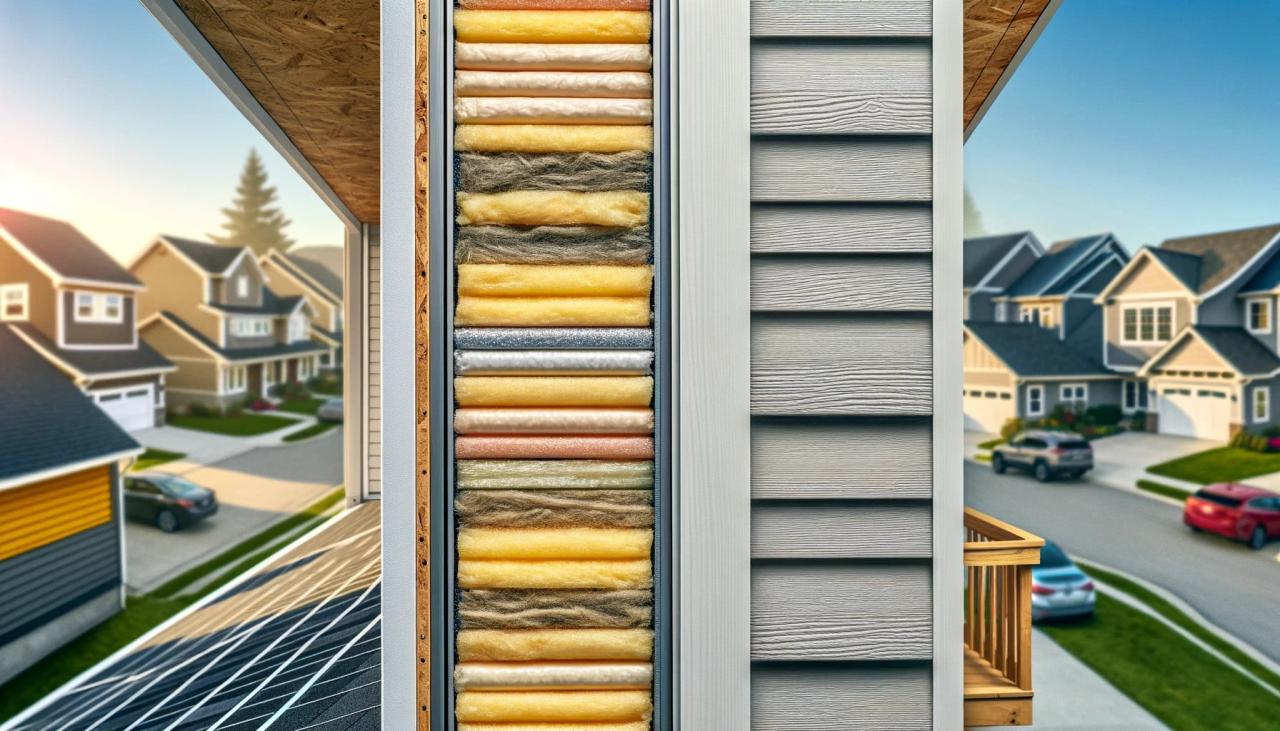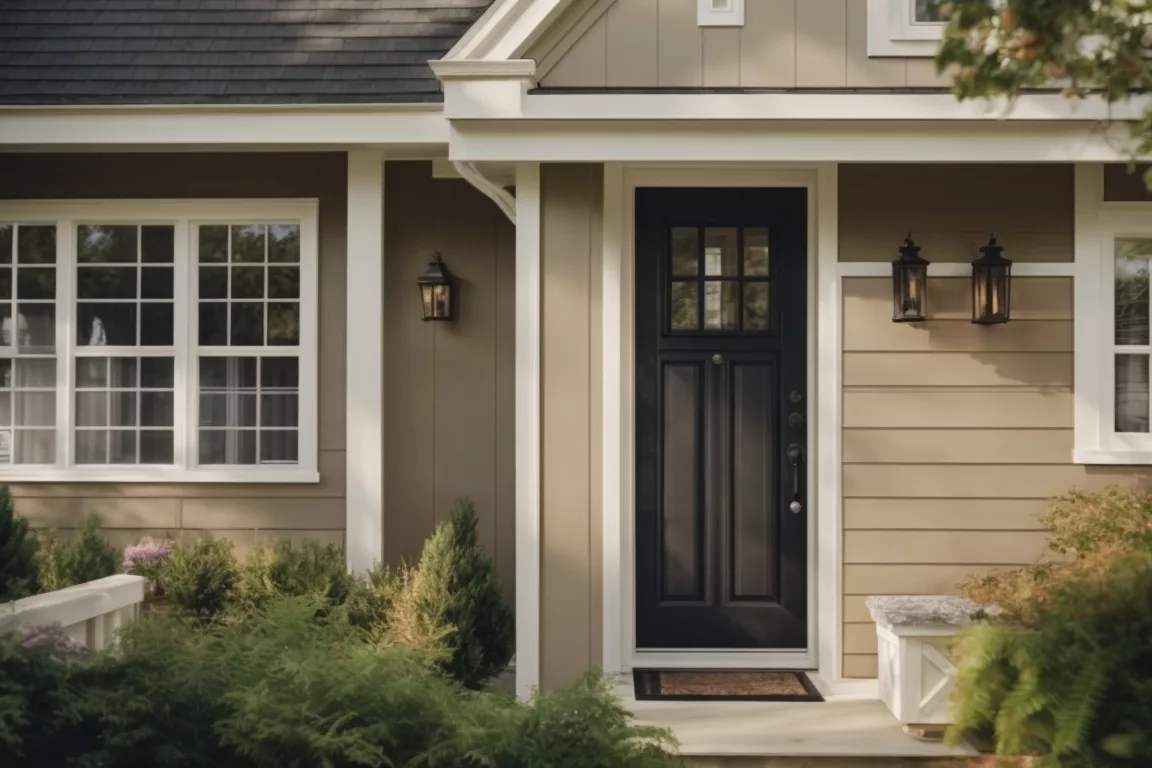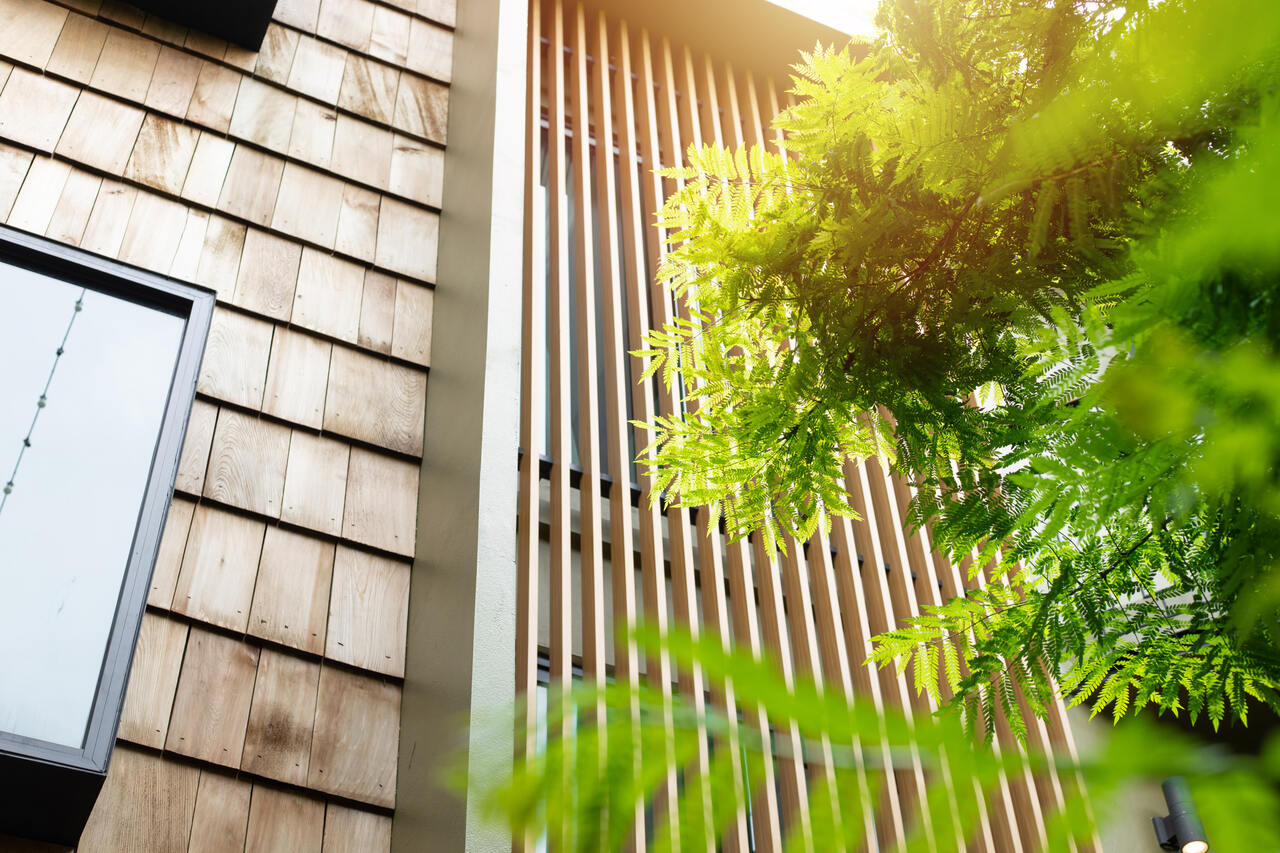Energy-efficient siding solutions for your home
Investing in energy-efficient siding is a smart move for homeowners seeking to reduce energy bills and increase their home’s value. Beyond simply enhancing curb appeal, these solutions offer significant long-term benefits, impacting both your wallet and the environment. This exploration delves into the various types of energy-efficient siding available, installation best practices, and a comprehensive cost-benefit analysis to help you make informed decisions.
From understanding the thermal performance of different materials like fiber cement, vinyl, and engineered wood, to navigating the complexities of installation techniques and government incentives, we aim to provide a clear and accessible guide. We’ll examine how factors such as climate, home orientation, and existing insulation interact to influence energy savings, ultimately empowering you to choose the optimal siding solution for your unique circumstances.
Types of Energy-Efficient Siding
Choosing the right siding can significantly impact your home’s energy efficiency and overall comfort. Different materials offer varying levels of insulation and durability, influencing both your energy bills and the longevity of your home’s exterior. Understanding these differences is key to making an informed decision.
Siding Material Comparison
The thermal performance, cost, and lifespan of siding materials vary considerably. This table summarizes key characteristics to help you compare options. Remember that actual costs and lifespans can be influenced by factors such as installation quality, climate, and maintenance.
| Material | Thermal Performance (R-value) | Cost (per sq ft) | Lifespan (years) |
|---|---|---|---|
| Fiber Cement | 0.8 – 1.2 (depending on thickness and composition) | $3 – $8 | 50+ |
| Vinyl | 0.5 – 0.9 (depending on thickness and type) | $1 – $4 | 20-30 |
| Engineered Wood | 0.7 – 1.0 (depending on composition and thickness) | $2 – $6 | 30-50 |
| Insulated Vinyl | 1.0 – 2.0 (depending on the thickness of the foam insulation core) | $4 – $7 | 20-30 |
Impact of Siding Color on Energy Efficiency
Siding color plays a crucial role in how much solar energy your home absorbs or reflects. Light colors, such as white or light gray, reflect a significant portion of the sun’s rays, reducing heat absorption and lowering cooling costs. Conversely, dark colors, such as black or dark brown, absorb more solar radiation, leading to increased heat absorption and higher cooling costs.
This effect is particularly noticeable in regions with intense sunlight. For example, a home with dark siding in a hot, sunny climate will experience significantly higher cooling costs compared to a similar home with light-colored siding. The difference can be substantial enough to offset the initial cost difference between siding options.
Visual Representation of Siding Cross-Sections
Imagine a series of diagrams, each representing a cross-section of a different siding type. The diagram for vinyl siding would show a relatively thin, solid piece of vinyl. The engineered wood siding cross-section would depict layers of wood fibers and resins, showcasing a more complex structure. The fiber cement siding diagram would highlight its composite nature, with visible cement and reinforcing fibers.
Finally, the insulated vinyl siding would show a distinct layer of foam insulation sandwiched between two vinyl layers, clearly demonstrating its enhanced thermal properties. The thickness of the insulation layer would be visibly greater than in the other siding types, visually emphasizing its superior insulating capacity. The diagrams would use different colors to represent the different materials, enhancing the visual clarity and making the insulation properties easily apparent.
Installation Techniques for Optimal Energy Efficiency

Proper installation of energy-efficient siding is crucial for maximizing its thermal performance and achieving significant energy savings. A poorly installed system, regardless of the siding material’s inherent properties, can lead to air leakage, moisture penetration, and reduced insulation effectiveness, negating the benefits of the chosen product. This section details best practices for ensuring optimal energy efficiency during siding installation.Proper sealing and insulation are paramount to maximizing the energy-efficiency of any siding system.
Air infiltration is a major source of heat loss in buildings, and meticulous sealing during installation is vital in minimizing this. Insulation, whether in the wall cavity or as part of the siding system itself, provides a thermal barrier, reducing heat transfer and maintaining a comfortable indoor temperature. The interaction between these two elements – air sealing and insulation – is synergistic; effective sealing allows insulation to perform at its peak.
Sealing Techniques for Energy-Efficient Siding
Effective sealing involves a multi-pronged approach, focusing on preventing air leakage at all points of potential entry. This includes careful attention to seams, gaps around windows and doors, and penetrations for electrical outlets and plumbing. High-quality sealant, applied generously and consistently, is essential. Appropriate sealants vary depending on the material of the siding and the substrate. For example, a flexible sealant might be used for areas prone to movement, while a rigid sealant might be suitable for less dynamic areas.
The use of backer rod to fill larger gaps before applying sealant is also a recommended practice, ensuring a complete and effective seal.
Insulation Strategies within Siding Systems
Insulation plays a critical role in maintaining a building’s energy efficiency. Depending on the type of siding, insulation can be installed within the wall cavity before siding installation, or integrated directly into the siding panels themselves. For example, some insulated vinyl siding incorporates a foam core, providing an additional layer of insulation. When installing traditional siding, proper insulation in the wall cavity is essential.
This typically involves using batt insulation or blown-in insulation to fill the space between the studs, ensuring complete coverage to minimize thermal bridging. The correct R-value of the insulation should be selected based on local climate conditions and building codes.
Step-by-Step Installation of Insulated Vinyl Siding
This guide Artikels the installation of insulated vinyl siding, emphasizing techniques to minimize air leakage. This example focuses on a common method, but specific manufacturer instructions should always be followed.
- Preparation: Begin by ensuring the existing wall sheathing is sound and free of damage. Repair any cracks or gaps before proceeding. Install house wrap to provide an additional layer of weather protection.
- Starter Strip Installation: Install the starter strip along the bottom of the wall, ensuring it is level and plumb. This provides a foundation for the rest of the siding panels.
- Siding Panel Installation: Install the first row of siding panels, interlocking them securely with the starter strip and each other. Ensure proper overlap to prevent air leakage. Use nails or screws specifically designed for vinyl siding.
- J-Channel and Corner Trim: Install J-channel around windows and doors and corner trim at exterior corners. These pieces provide a neat finish and help to seal these critical areas.
- Caulk and Sealant Application: After the siding is installed, carefully caulk all seams and joints between panels and trim pieces. Pay special attention to areas around windows and doors. Use a high-quality, exterior-grade caulk suitable for vinyl siding.
- Finishing: Install finishing pieces, such as soffit and fascia, to complete the installation. Ensure proper sealing around these components as well.
Comparison of Installation Methods for Different Siding Types
Different siding types, such as wood, fiber cement, and vinyl, require varying installation techniques. Wood siding often involves nailing directly to furring strips, requiring careful attention to spacing and alignment to prevent moisture issues. Fiber cement siding, known for its durability, may require specialized tools and techniques for cutting and fastening. Vinyl siding, as shown above, uses an interlocking system and requires precise alignment to ensure a weathertight seal.
Each type has its own specific requirements for achieving optimal energy efficiency during installation, emphasizing the importance of following manufacturer guidelines and employing best practices.
Factors Affecting Energy Savings with Siding

Energy-efficient siding significantly impacts a home’s energy consumption, but the extent of these savings depends on several interacting factors. Understanding these factors allows homeowners to make informed decisions and maximize the return on their investment in energy-efficient siding. This section will explore the key elements influencing energy savings, providing a clearer picture of what to expect.
The energy savings realized from energy-efficient siding are not solely determined by the siding material itself. Instead, it’s a complex interplay of several factors, including the climate, the home’s orientation, and the existing insulation levels. These factors interact to influence the overall effectiveness of the siding in reducing energy loss through the home’s exterior walls.
Climate’s Influence on Energy Savings
Climate plays a crucial role in determining the energy savings achievable with energy-efficient siding. In regions with extreme temperature variations, such as those experiencing harsh winters or hot summers, the impact of energy-efficient siding is amplified. Homes located in areas with consistently cold temperatures will see greater savings from siding with superior insulation properties, as it helps to reduce heat loss.
Conversely, in hot climates, the reflective properties of certain siding materials become more important, minimizing heat absorption and keeping the interior cooler. For instance, a home in Alaska might see a much more substantial reduction in heating bills with high-insulation siding compared to a home in Southern California, where the primary benefit might be reduced cooling costs from reflective siding.
Home Orientation and Solar Gain
The orientation of a home significantly affects its exposure to solar radiation. South-facing walls in the Northern Hemisphere receive more direct sunlight, leading to increased heat gain in the summer and potentially reduced heat loss in the winter. Energy-efficient siding can mitigate these effects. For example, siding with high solar reflectance can reduce heat gain during summer months on south-facing walls, thus lowering cooling costs.
Conversely, siding with good thermal resistance can reduce heat loss from north-facing walls during winter months. The strategic use of different siding materials on different walls, based on their orientation, can further optimize energy savings.
Existing Insulation and its Interaction with Siding
The existing insulation levels within the home’s walls are a critical factor interacting with the effectiveness of energy-efficient siding. Even the most effective siding will not fully compensate for inadequate wall insulation. If the walls are poorly insulated, a significant portion of the heat will still be lost through the wall cavity, regardless of the siding’s insulation properties.
Therefore, optimizing wall insulation before or concurrently with installing energy-efficient siding is essential to maximize energy savings. A well-insulated home with energy-efficient siding will see far greater savings than a poorly insulated home with the same siding.
Hypothetical Scenario: Energy Bill Comparison
Let’s consider a hypothetical scenario comparing a 1,500 sq ft home with standard vinyl siding versus energy-efficient fiber cement siding. We’ll assume the home is located in a region with average winter temperatures of 30°F and summer temperatures of 85°F. We’ll also assume the home has existing insulation meeting the minimum code requirements.
| Factor | Standard Vinyl Siding | Energy-Efficient Fiber Cement Siding |
|---|---|---|
| Annual Heating Costs | $1,500 | $1,200 (20% reduction) |
| Annual Cooling Costs | $800 | $700 (12.5% reduction) |
| Total Annual Energy Costs | $2,300 | $1,900 (17.4% reduction) |
These figures are estimations based on average energy costs and assumed energy efficiency improvements. Actual savings may vary depending on specific factors mentioned above. The significant reduction in heating costs is attributed to the superior insulation properties of the fiber cement siding. The smaller reduction in cooling costs reflects the fiber cement siding’s moderate reflectivity.
Potential Drawbacks of Energy-Efficient Siding
While energy-efficient siding offers numerous benefits, several potential drawbacks should be considered. These include higher initial costs compared to standard siding options, potential installation complexities depending on the chosen material, and the need for specialized maintenance procedures for certain types of siding. For example, some high-performance siding materials might require more careful cleaning or specialized repair techniques, potentially increasing long-term maintenance expenses.
It’s crucial to weigh these potential drawbacks against the long-term energy savings and other benefits before making a decision.
Choosing the Right Energy-Efficient Siding

Selecting the ideal energy-efficient siding involves careful consideration of several factors, balancing aesthetic preferences with budgetary constraints and long-term energy savings. This process requires understanding the properties of different materials, their installation requirements, and their impact on your home’s overall energy performance. A systematic approach ensures a well-informed decision leading to significant energy efficiency improvements.
A Decision-Making Flowchart for Siding Selection
The following flowchart assists homeowners in navigating the selection process, leading to the most suitable siding option for their individual circumstances.
Start
|
V
Is budget a primary concern?
-----> Yes/No
| |
V V
Yes: Consider vinyl or fiber cement No: Consider options like wood, fiber cement, or engineered wood
| |
V V
Assess climate and maintenance needs | Assess climate and maintenance needs
| |
V V
Choose siding based on climate and Choose siding based on climate and
desired aesthetic.
desired aesthetic.
| |
V V
Consider insulation backing Consider insulation backing
| |
V V
Installation and warranty details Installation and warranty details
| |
V V
Final Siding Selection Final Siding Selection
|
V
End
This flowchart provides a simplified guide.
Detailed research on specific siding types remains crucial for making an informed decision.
Case Studies of Successful Energy-Efficient Siding Implementations
A suburban home in Denver, Colorado, retrofitted its aging wood siding with high-performance fiber cement. The initial investment yielded a 20% reduction in annual heating costs within the first year, exceeding initial projections due to the improved insulation and weather resistance of the new siding. This outcome showcases the significant energy savings potential of upgrading to modern, energy-efficient siding, especially in regions with extreme temperature fluctuations.
Another example is a coastal home in Maine that chose vinyl siding with enhanced insulation backing. The homeowner prioritized low maintenance and durability, resulting in a significant reduction in annual energy costs and reduced repair expenses associated with the previous wood siding, which was prone to rot and insect damage. The vinyl siding’s resilience to harsh weather conditions also contributed to the home’s improved energy performance and longevity.
Environmental Impact of Siding Materials
The environmental impact of siding varies significantly depending on the material’s life cycle. Vinyl siding, while cost-effective and low-maintenance, relies on petroleum-based products during manufacturing and is not easily recyclable. Fiber cement siding, a composite material of cement, sand, and cellulose fibers, generally has a lower environmental impact due to its use of readily available materials, although its manufacturing process does consume energy.
Wood siding, a renewable resource, presents a more environmentally friendly option when sourced from sustainably managed forests. However, its lifespan and susceptibility to decay must be considered. Proper disposal methods for each material are also essential for minimizing environmental impact, with recycling options for some materials being increasingly available. Ultimately, a holistic assessment considering manufacturing, use, and disposal is necessary for a comprehensive understanding of the environmental footprint of each siding option.
Wrap-Up
Ultimately, selecting energy-efficient siding is an investment in both comfort and sustainability. By carefully considering the factors discussed—material properties, installation techniques, long-term costs, and environmental impact—homeowners can significantly reduce their energy consumption, lower their carbon footprint, and enhance the overall value of their property. The potential return on investment, coupled with the environmental benefits, makes this upgrade a worthwhile consideration for any homeowner looking to improve their home’s performance and efficiency.
FAQ Insights
What is the R-value, and why is it important for siding?
R-value measures a material’s resistance to heat flow. Higher R-values indicate better insulation, leading to lower energy bills.
How long does it typically take to install energy-efficient siding?
Installation time varies depending on the size of the house, siding material, and complexity of the project. It can range from a few days to several weeks.
Can I install energy-efficient siding myself, or do I need a professional?
While some DIY projects are possible, professional installation is generally recommended for optimal energy efficiency and to ensure a long-lasting, properly sealed installation. Improper installation can negate the energy-saving benefits.
Are there any potential downsides to energy-efficient siding?
Potential downsides include higher initial costs compared to standard siding and the possibility of limited color options depending on the material chosen. However, these are often offset by long-term energy savings.